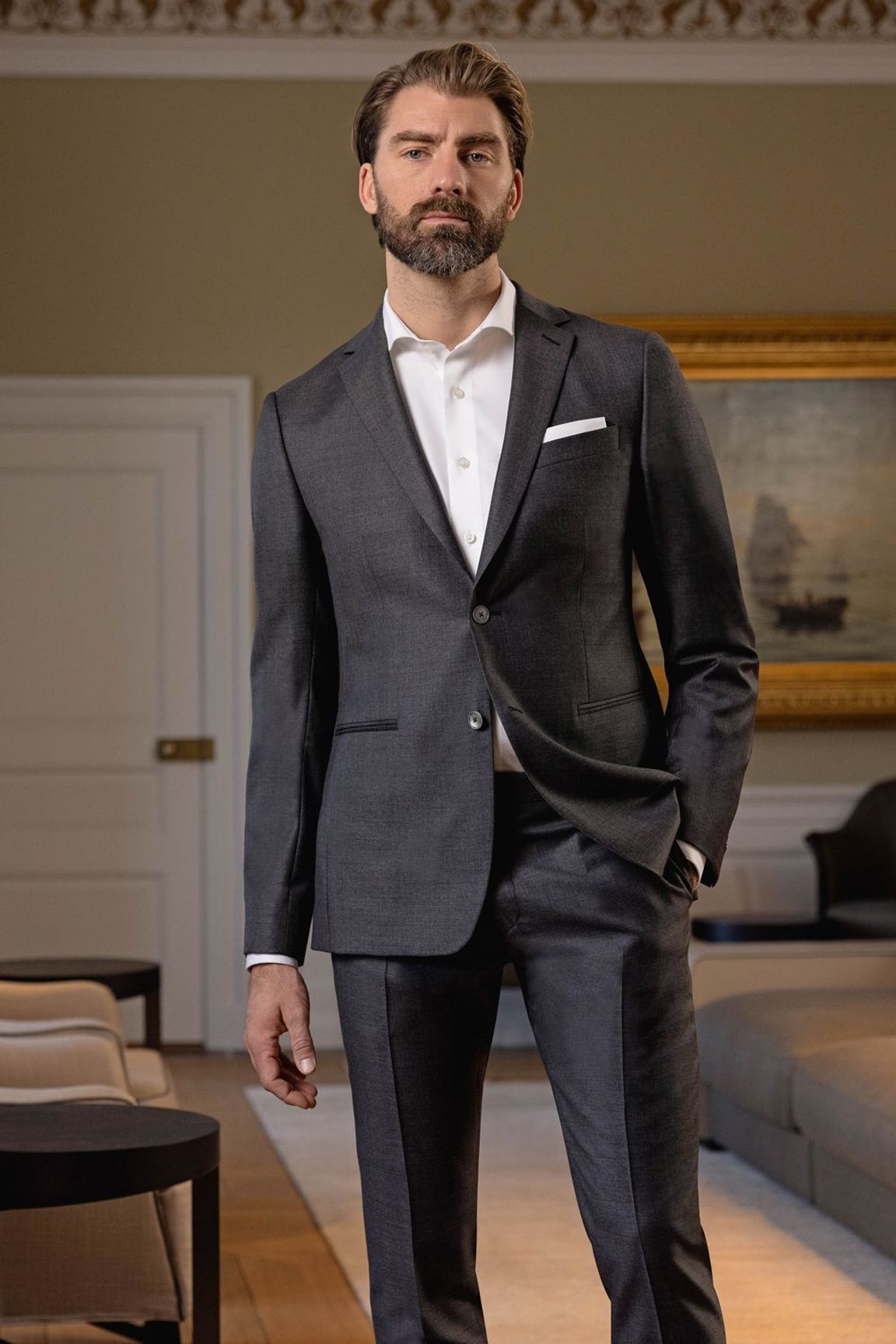Bespoke Tailor Perth: Crafting the Perfect Suit for You
Bespoke Tailor Perth: Crafting the Perfect Suit for You
Blog Article
Recognizing the Tailoring Refine: From Fabric Option to Final Fitting for the Perfect Wardrobe
The tailoring procedure is a complex interplay of art and scientific research, beginning with the crucial choice of fabric selection and finishing in the accurate changes of last installations. Each fabric type brings distinct top qualities that influence not just the visual appeal yet also the garment's long life and suitability for various occasions. Understanding the nuances of tailoring strategies can elevate one's wardrobe to unprecedented levels of class. As we discover these components further, one should consider how even the smallest details can dramatically impact the overall result of one's individual style.
Relevance of Fabric Selection
Choosing the best material is vital in the customizing process, as it straight influences the convenience, toughness, and total visual of the last garment. The selection of material sets the foundation for the garment's performance, capability, and design. Various materials have one-of-a-kind residential or commercial properties, such as breathability, stretch, and weight, which can significantly influence exactly how the garment drapes and fits the body.

A customized item made from a suitable textile not only showcases craftsmanship however likewise raises the user's confidence. As a result, recognizing the nuances of textile option is vital for any tailoring endeavor. It ensures that the last item not just fulfills the aesthetic needs of the customer however additionally aligns with practical demands, thereby attaining a harmonious equilibrium in between kind and function in the customized closet.
Kinds Of Fabrics and Their Usages
Comprehending the numerous kinds of fabrics available is important for making notified decisions throughout the customizing process. Each textile has distinct qualities that determine its viability for particular garments and occasions.
Its adaptability enables it to be tailored right into whatever from t-shirts to dresses. Its all-natural flexibility aids garments preserve form over time.
Silk emanates luxury and is light-weight, making it perfect for eveningwear and delicate blouses; nevertheless, it needs careful handling as a result of its delicacy. Linen, with its distinctive finish, is a preferred choice for cozy climates, providing a crisp and ventilated feeling, yet it wrinkles quickly, which may influence the garment's look.
Synthetic fabrics, such as polyester and nylon, deal durability and resistance to creases, making them suitable for everyday wear and energetic clothes. Understanding these textile types and their residential or commercial properties enables far better decision-making, guaranteeing that each customized piece not just fits well yet also lines up with the intended function and celebration.
The Tailoring Methods Described
The art of customizing counts on a variety of methods that change textile into well-fitted garments. Central to this process is pattern drafting, where a tailor produces themes based on the client's measurements and preferred design. This preliminary action ensures that the garment will fit the user effectively before any cutting takes place.
Once patterns are developed, cutting methods enter into play. Accuracy is vital as errors can bring about misfitting garments. Tailors typically make use of various cutting methods, such as single-layer cutting for elaborate designs and multiple-layer cutting for effectiveness on common patterns.
Basting is an additional necessary technique, allowing tailors to temporarily stitch fabric assemble for an initial installation (wedding suits perth). This technique supplies right here the opportunity to assess the drape and total silhouette prior to last stitching
Seaming methods, consisting of flat-felled joints and French seams, enhance the garment's sturdiness and visual appeal. Tailors also utilize methods such as interfacing and cushioning to give framework and form to certain areas, like collars and shoulders.
Last but not least, ending up strategies, consisting of hemming and side finishing, guarantee the garment's durability while supplying a refined look. With each other, these methods develop the backbone of reliable helpful hints customizing, causing elegant, tailor-made garments.

Suitable Changes and Considerations
After the preliminary tailoring strategies have been applied and the garment is built, suitable changes come to be paramount to achieving the perfect fit. These adjustments address various facets of the garment, guaranteeing it contours to the wearer's physique and boosts overall look.

The surge of pants is one more crucial element; it ought to sit comfortably above the hips without causing pain, enabling simplicity of motion. Hemming lengths for both pants and skirts should mirror the user's favored style while respecting percentages.
In addition, interest ought to be offered to the back of the garment, making certain that there are no unpleasant pulls or excess fabric - tailored suits perth. Each modification must be diligently thought about, as also small alterations can considerably influence the total fit and visual of the tailored item, eventually leading to a closet that shows self-confidence and elegance
Keeping Your Tailored Clothing
Always comply with more the treatment label directions, which might advise dry cleaning for fragile fabrics or device cleaning for more long lasting materials. Prevent regular laundering, as this can put on down the material and modify the garment's shape.
Storage space is equally crucial; usage padded hangers for coats and coats to preserve shoulder framework, and store trousers folded up nicely or hung to avoid creasing. Shield garments from direct sunshine, which can discolor shades and damage fibers.
Furthermore, routine assessments for minor repairs can prevent bigger concerns. Look for loosened switches, tearing joints, or indicators of moth damages, resolving these troubles immediately to maintain the garment's honesty.
Last but not least, take into consideration seasonal turning. Using tailored pieces in moderation permits textiles to recuperate, prolonging their lifespan. By applying these upkeep methods, you can make sure that your tailored garments continue to be as beautiful as the day you first used them, boosting your perfect wardrobe for years to come.
Verdict
The customizing procedure, including fabric selection, skilled strategies, and exact fitting adjustments, plays a critical function in developing garments that improve both convenience and design. Each stage adds to the general efficiency of the end product, making sure that clothes not only fits well yet likewise reflects specific identity. In addition, comprehending the relevance of maintenance prolongs the life of tailored garments, strengthening their value in a well-curated closet. An extensive strategy to tailoring finishes in a polished and positive appearance.
Report this page